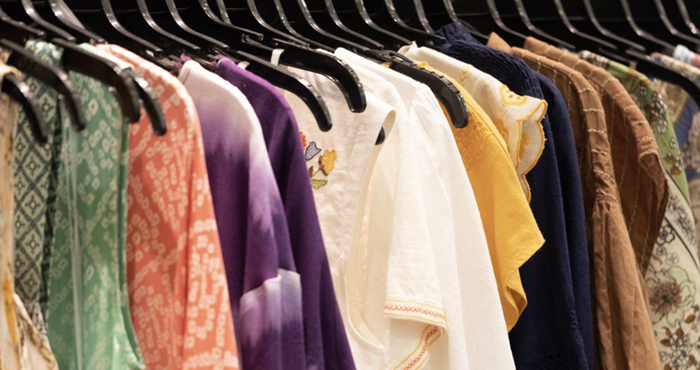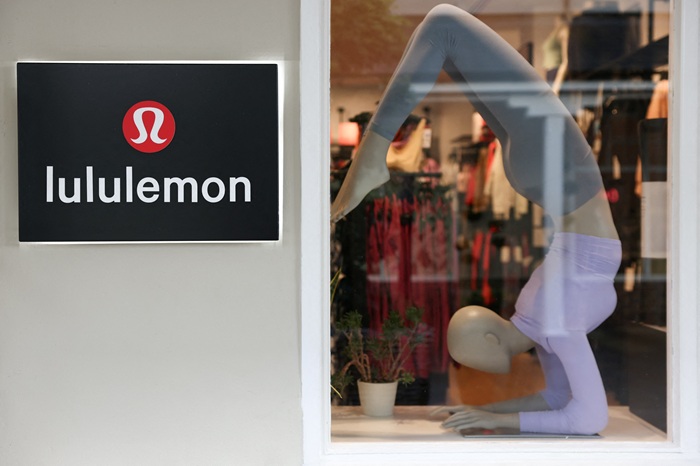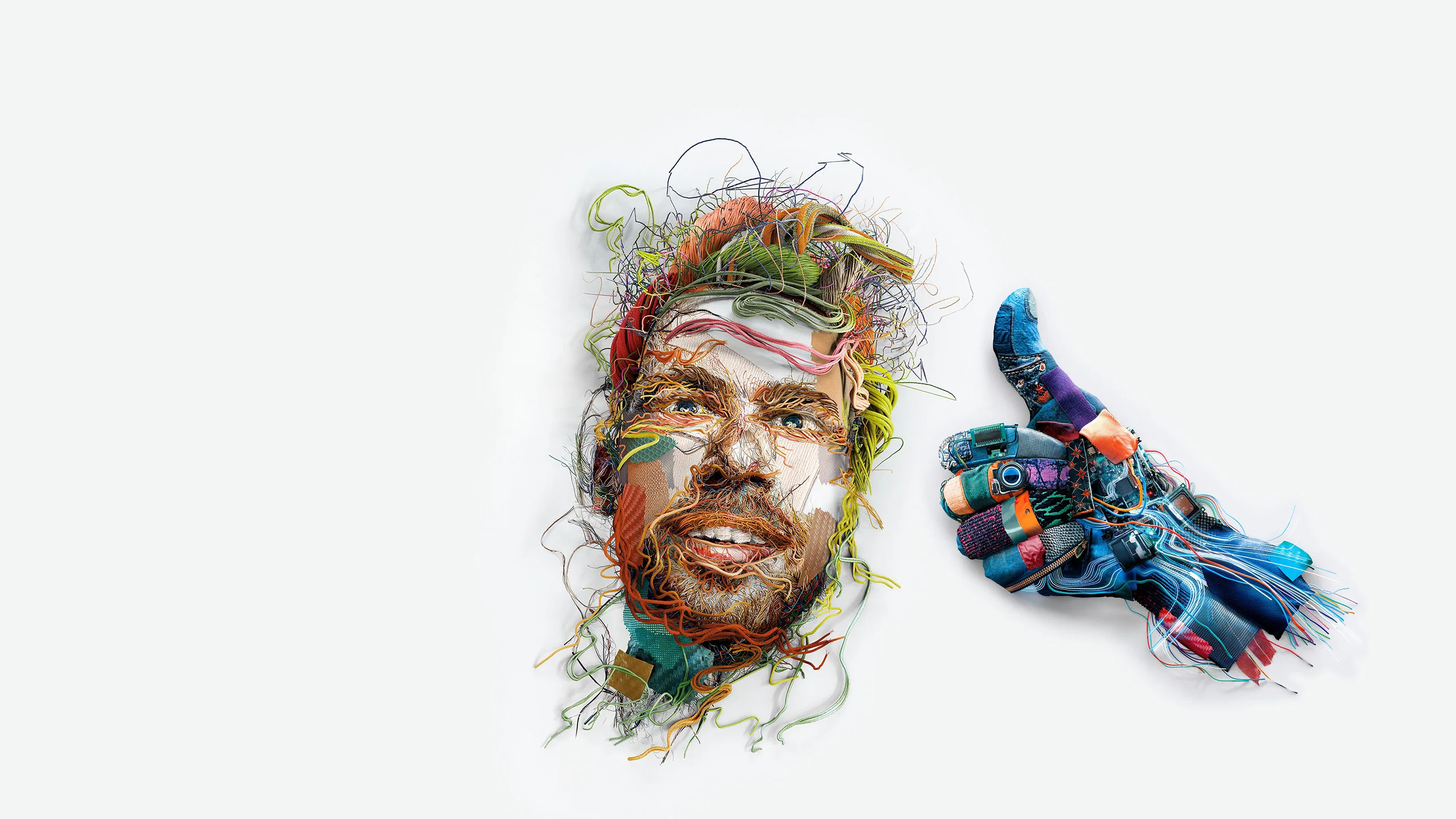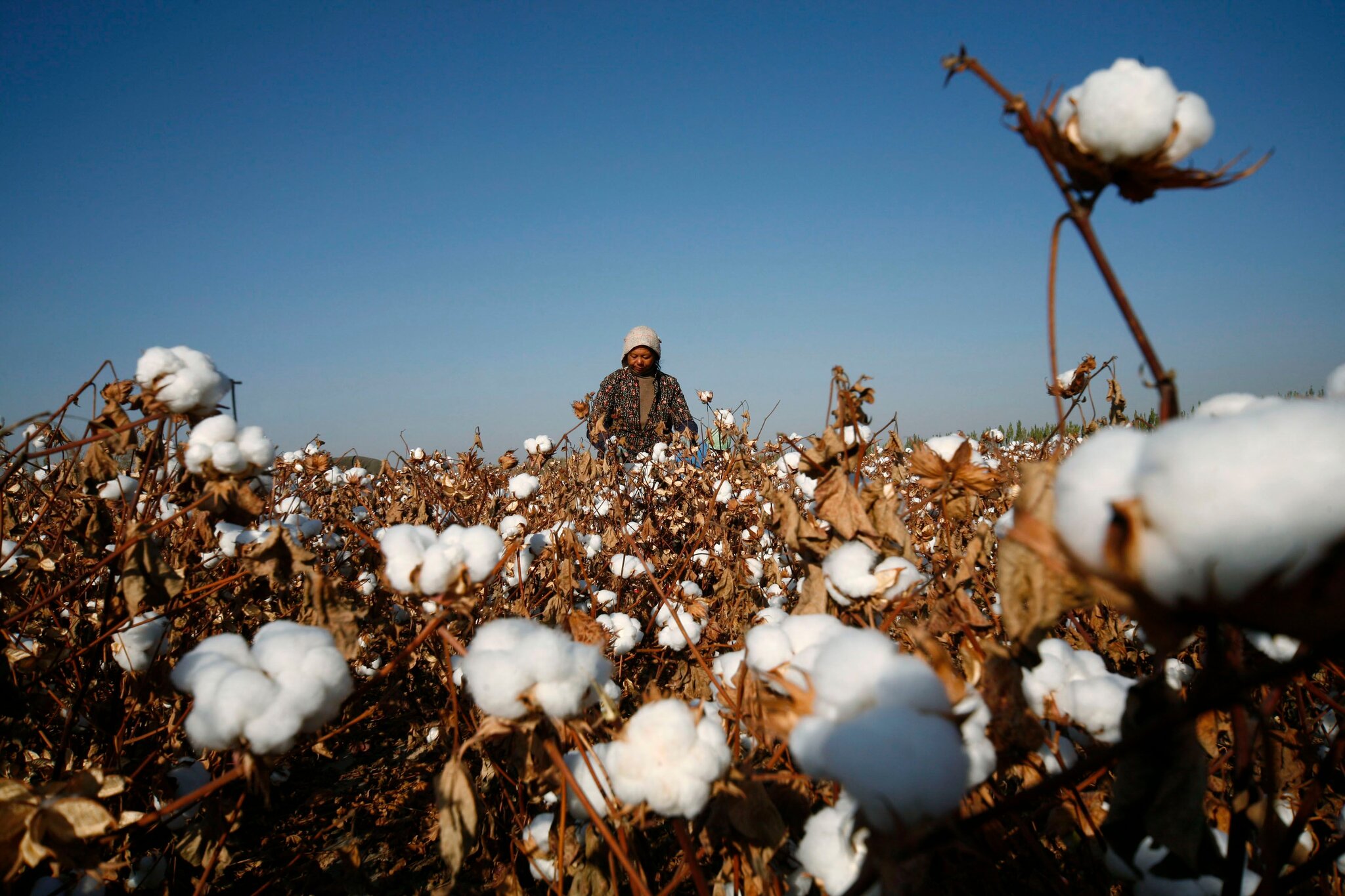FW
Circular materials leader, Ambercycle has teamed up with Shenghong Holding Group to expand the production of regenerated filament yarns made with cycora® material. This collaboration addresses the global demands for circular solutions in the apparel industry by integrating cycora® into the Chinese value chain.
Ambercycle and Shenghong have been collaborating since 2024 in order to develop high-quality regenerated filament yarns using cycora® material. The partnership between these two companies helps drive scalable, impactful change across the apparel sector, says Jason Tang, General Manager, Shenghong Chemical Fiber New Material Co.
The cycora® material enables brands to integrate sustainability into their supply chains seamlessly by replacing virgin inputs with textile-to-textile regenerated materials. The partnership accelerates the industry's transition to a circular future, where waste is reimagined as a valuable resource.
Shay Sethi, Co-founder and CEO, Ambercycle, notes, the company’s partnership with Shenghong emphasizes on the brand’s shared vision for a circular future. It ensures the seamless integration of cycora® into the supply chains of the leading global brand by leveraging Shenghong's advanced manufacturing capabilities. Together, the two companies drive the adoption of circular materials across the apparel industry at the pace necessary to meet the growing demand.
The upcoming 11th edition of Surat International Textile Expo 2025 (SITEX) at Surat in Gujarat will launch Velvet Airjet Machinery.
Organized by the Southern Gujarat Chamber of Commerce and Industry (SGCCI), the three-day event will be held from January 10-12, 2025 at the Surat International Exhibition and Convention Centre in Sarsana.
To be showcased for the first time in India, the Velvet Airjet Machinery will redefine velvet production by drastically lowering costs and improving fabric quality. Highlighting the transformative potential of this machinery, Vijay Mewawala, President, SGCCI states, the technology will enable India to produce high-quality velvet, eliminating the need for imports from Korea.
Currently, Indian manufacturers produce velvet with a quality number of 5,000, while Korean imports offer a superior quality number of 11,000, often used in luxury lehengas priced between Rs 50,000 to RS 100,000. Operating at 600 RPM, the new machinery will now produce the higher-quality velvet domestically. This development will reduce production costs from Rs 1,500-Rs 2,000 per meter for imported velvet to just Rs 200 per meter, making premium velvet more affordable for manufacturers and consumers alike.
The Velvet Airjet Machinery boasts advanced features such as 100 per cent electronic operation, WiFi connectivity, mobile device control, and zero-defect production, ensuring top-tier fabric quality.
SITEX 2025 will also feature several other state-of-the-art textile innovations including the 32-Head Embroidery and Viscose Jacquard Machine and other value-added fabric machines.
Creating pure and semi-silk fabrics using gold and silver wire, these indigenous machines are energy-efficient and cost-effective, offering robust service support to local manufacturers.
Recognized for advancing Surat’s textile industry in global markets, SITEX 2025 aims to modernize the sector, attract investments, and foster innovation. The exhibition provides a platform to propel Surat’s textile industry forward, says Mewawala.
A coated technical textiles specialist acquired by Freudenberg Performance Materials as a part of Low & Bonar 2020, Mehler Texnologies plans to close its Fulda, Germany plant by 2025-end.
The company arrived at this decision after years of sluggish market conditions and significant overcapacity within its production network. The closure is likely impact 192 employees. The company is discussing ways to develop socially responsible solutions for this with employee representative bodies.
In December 2024, the antitrust authorities in Germany, Austria and Poland approved the acquisition of Hytex’s core business by Freudenberg Performance Materials. Freudenberg had acquired three production sites of Heytex in Germany and China, along with all headquarters-related functions. These assets now form a part of the company’s newly established Coated Technical Textiles division.
With the recent addition of Consist Apparels to the list, Bangladesh has increased the number of its Leadership in Energy and Environmental Design (LEED)-certified garment factories to 233. Marking a notable milestone in its commitment to green practices, the company was granted platinum certification.
Currently, Bangladesh has 233 LEED-certified garment factories, as per Bangladesh Garment Manufacturers and Exporters Association (BGMEA). Among these, 93 are platinum-certified, while 126 hold gold ratings. This achievement consolidates the country’s position as the leader in sustainable development within the garment industry.
Endorsed by the US Green Building Council (USGBC), LEED certification is globally recognised as a standard to promote environmentally responsible building design, construction, and operation. The certification helps enhance sustainability in Bangladesh’s garment sector besides positioning the nation as a leading eco-friendly garments manufacturer.
The American Apparel & Footwear Association (AAFA) has commended the Office of the United States Trade Representative (USTR) for releasing the 2024 Review of Notorious Markets for Counterfeiting and Piracy. This annual report identifies online and physical markets that facilitate significant trademark counterfeiting and copyright piracy, supporting global efforts to protect intellectual property (IP) and consumer safety.
In October 2024, AAFA submitted extensive member-led comments to USTR, advocating for enhanced enforcement against illicit trade. Notably, two platforms nominated by AAFA were included in the 2024 Notorious Markets List, underscoring the ongoing challenges faced by the industry.
“We appreciate USTR’s commitment to combating counterfeiting and protecting American consumers, brands, and workers,” said Steve Lamar, AAFA president and CEO. However, he expressed concern over the exclusion of US-based platforms from the report, urging a comprehensive approach to address all markets contributing to counterfeit sales.
AAFA called on the administration to establish an Interagency Working Group to fight illicit trade and to prioritize IP enforcement in key administrative roles. Jennifer Hanks, AAFA’s senior director of brand protection, emphasized the importance of collaboration between government, industry, and stakeholders to strengthen efforts against counterfeit trafficking and IP infringement.
AAFA remains committed to advancing robust protections for intellectual property and legitimate businesses worldwide.
Signing a multi-year partnership deal with Mercedes-AMG Petronas Formula One Team, Adidas has become the team's new official kit supplier.
This announcement comes months after speculation fueled by leaked images of branded gear late last year, which hinted at the impending deal. The partnership marks the end Puma’s run as Mercedes’ kit provider and signals a new beginning for the F1 team.
Adidas will supply a specially designed kit including a comprehensive apparel range, footwear, and accessories to the team. To debut next month, the kit will also be available for fans to purchase. Additionally, Adidas will also supply limited-edition merchandise collections across the year as Mercedes gears to open the season in Australia on March 16.
This deal comes at a pivotal time for Adidas, which recently lost its bid to supply Germany's national soccer teams to Nike for the 2027–2034 period. Mercedes is also collaborating with fashion brand Tommy Hilfiger, where seven-time world champion, Lewis Hamilton has served as a global ambassador.
eVent Fabrics, a global leader in waterproof and breathable fabric technologies, has announced a bold brand evolution with the introduction of its new tagline, ‘Defy the Elements.’ This marks a renewed focus on sustainably-minded performance innovations designed to empower outdoor enthusiasts to embrace any weather.
“Our relentless pursuit of excellence ensures every fiber, weave, and layer stands up to nature’s harshest conditions,” said Chad Kelly, President of eVent Fabrics. “The ‘Defy the Elements’ tagline encapsulates our dedication to innovation and quality, providing users the confidence to face torrential rain, biting winds, or extreme temperatures while staying comfortable and dry.”
This tagline bridges eVent’s mission to craft cutting-edge, high-performing materials with its commitment to supporting adventurers who refuse to let weather dictate their plans. From hiking and climbing to skiing and cycling, eVent’s advanced laminates are designed for a broad range of outdoor activities.
The new tagline will feature prominently on hang tags, brand collateral, and communications, embodying eVent’s vision of inspiring confidence in both loyal customers and new audiences. By combining innovative technology with a user-centric approach, eVent Fabrics is set to redefine outdoor gear performance for the modern adventurer.
Global jeans specialist JD United (JDU Manufacturing Co Ltd), a subsidiary of Roohsing Group, has adopted Coats Digital’s GSDCost solution to enhance production efficiency, standardize cost-to-make (CM) processes, and align with evolving customer expectations. The solution will initially optimize operations across three of JD United’s 31 production facilities, with plans for expansion to factories in China, Tanzania, Myanmar, and Cambodia later this year.
Headquartered in Changzhou, China, JD United operates 31 factories globally, employing over 30,000 people and producing high-quality jeans, woven jackets, knitted pyjamas, shirts, and trousers for major brands such as Levi’s, Gap, and Primark. Committed to sustainable manufacturing, the company has implemented low-carbon processes, greener energy initiatives, and advanced water treatment methods.
Jessie Chen, Business Director of JD United, highlighted the value of GSDCost, saying, “Standardized methods enable us to replace inaccurate historical data with reliable scientific metrics. This supports accurate CM quotes, improved sewing methods, and balanced production lines. GSDCost aligns seamlessly with our sustainability goals and digital transformation strategy.”
Tracy Li, Sales Manager at JD United, commended the Coats Digital training team for their dedication, stating, “Their support has been instrumental in equipping us to maximize GSDCost’s potential for operational efficiency.”
Coats Digital’s GSDCost is recognized as the industry benchmark for optimizing CM processes. It fosters a sustainable supply chain by introducing standard motion codes and predetermined times to enable accurate cost predictions and efficient negotiations.
Liv Zhang, Sales Director (Greater China) at Coats Digital, remarked, “We are excited to help JD United boost profits and strengthen its global leadership through GSDCost’s proven methodology and tools.”
The 63rd edition of the international yarn and fiber exhibition, Filo will launch the Filo Capsule Collection. Translating the creative themes of ‘Collages’ from Filo’s Dialoghi Creativi into tangible fabric prototypes, this exclusive collection will showcase the seamless connection between stylistic innovation and production.
Curated by Rossano Bisio, Renowned Fabric Designer, the Capsule Collection embodies the essence of Italian textile craftsmanship. Created using yarns supplied by Filo exhibitors, the collection transforms the product development proposals from Gianni Bologna, Head - Style and Creativity, Filo into fabrics that honor Italy’s rich manufacturing tradition. The collection aims to bring Filo’s product development proposals to life, moving beyond descriptive or multimedia presentations to create a real collection of fabrics, explains Bisio.
To be held from February 26-27, 2025, at Allianz MiCo, Viale Eginardo Gate 3, Milan, the Filo exhibition this year will highlight the newly designed Dialoghi Creativi Area focusing on product research, development, and the transformation process. The area will give visitors a firsthand look at the Filo Capsule Collection, and allow them to gain insights into the synergy between design and production.
Paolo Monfermoso, Manager, Filo, emphasizes, the Filo Capsule Collection aims to reverse the trend of undermining technical skills by offering a tangible tool to stimulate creativity and innovation. It not only highlights the innovative spirit of the event but also serves as a beacon for creativity and sustainability in the textile industry, he adds.
The 63rd edition of Filo promises to be a landmark moment for the textile industry, blending tradition and innovation in an unprecedented way.
Fortude has entered into a strategic partnership with leading supply chain traceability platform Ettos to help fashion businesses improve transparency and give customers deeper insights into their production methods. This collaboration will enable fashion brands to streamline operations and strengthe supply chain transparency by combining traceability, compliance, and Digital Product Passports (DPPs) into an integrated solution.
Simplifying the tracking of raw materials and verifying sustainability claims, the Ettos’ platform features a B2B web platform for managing traceability and compliance, as well as a B2C web app that delivers DPPs to consumers via QR codes. Through this partnership, Fortude and Ettos aim to enhance their services in the fashion industry, supporting clients from sourcing raw materials to delivering finished products.
Adriana Batty, Co-founder, Ettos, states, Fortude’s expertise in digital solutions and strong foundation in the fashion industry align with Ettos’ vision to create a more transparent global supply chain. Together, the two firms aim to enpower brands and consumers with reliable sustainability insights.”
Daniel Rodrigo, Senior Vice President -Global Technical Consulting, Fortude, adds, this partnership with Ettos underscores the company’s commitment to deliver impactful digital solutions. As a long-time info partner, Fortude has provided ERP solutions to numerous global fashion brands. Expanding its focus on digital transformation, this collaboration will help fashion brands achieve greater transparency and compliance.
Representing a major milestone in addressing the fashion industry's growing demand for sustainability and traceability, this partnership helps Fortude and Ettos guide other brands through complex supply chain challenges, fostering a more sustainable and transparent future for the fashion industry.












